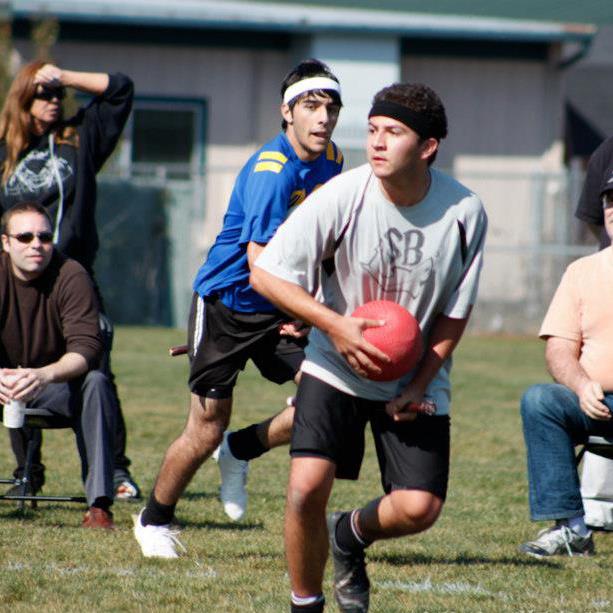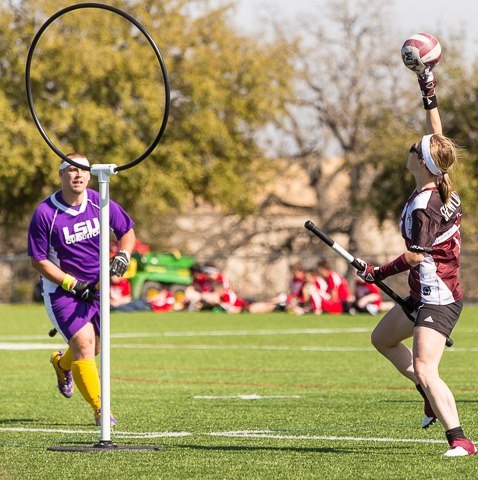- Rule, Britannia, no more?
- Unpopular Opinions: US Quadball Cup 2023
- Proven Contenders: University of Virginia
- Proven Contenders: Rutgers University
- Proven Contenders: University of Michigan
- Proven Contenders: Creighton University
- Different Perspectives: A Look Inside USA Ultimate
- Antwerp QC, Much of Belgian Core, Leaves Competitive Quidditch
Firemercs Invitational Preview
- Updated: July 5, 2013
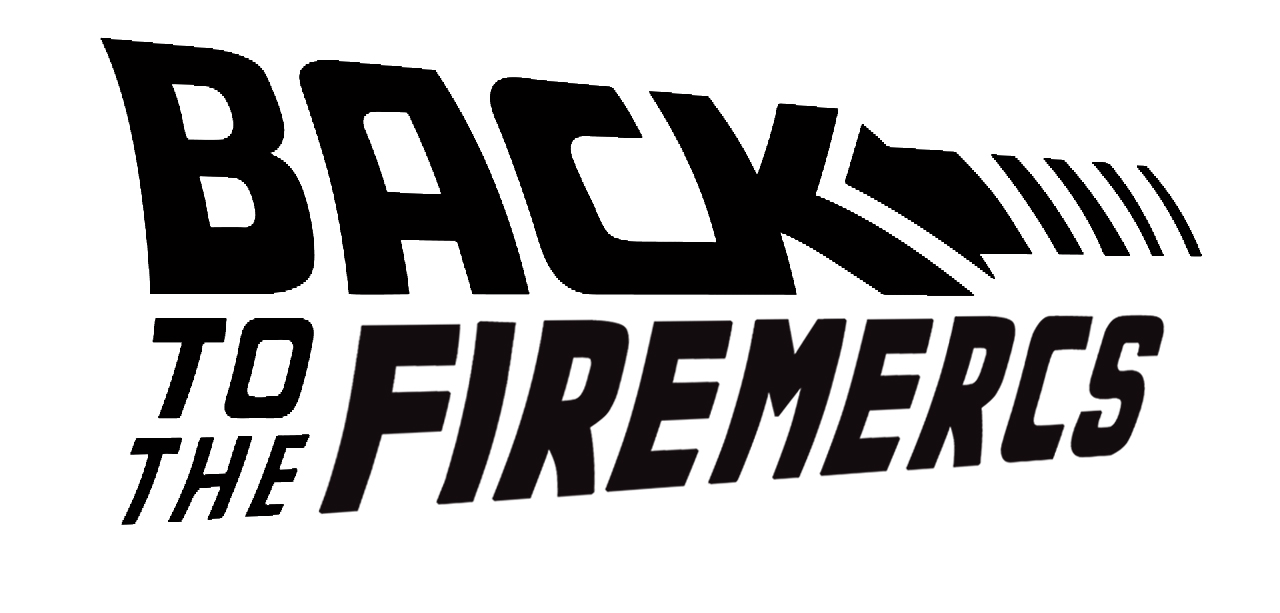
The second major American fantasy tournament of the summer kicks off tomorrow morning, as players from every US region, as well as Canada, descend on Los Angeles for the Firemercs Invitational. Not only will the best of the west be on display in this nine-team tournament, but All-Americans from other regions will joining the fray as well. How will they hold up in a region that has one of the strongest World Cup performance? And will a region built so largely on team cohesion be able to adjust to the chemistry needs of a fantasy tournament? We’re about to find out.
(Author’s Note: Players are listed on the team they played for last season.)
Pink Team (Captain Chris Lock, Santa Barbara Blacktips)
With the first pick in the draft, Lock opted for UCLA chaser Adam Richardson. Richardson is physical, fast, tenacious, and a very selfless player. With this incredible foundation in place, Lock then went about installing a solid supporting cast around him. The beating corps of Santa Barbara’s Brian Vampola and USC’s Julia Thomas combine a young prodigy adept at conservative and defensive beater play in Vampola with a veteran excelling at aggressive beater play in Thomas. Look for Vampola to do what he does best at defending the hoops while Thomas forces bad passes and wreaks havoc on opposing strategies. Lock, himself a lengthy keeper, then added two fast, agile chasers with good tenacity to compliment Richardson in Riverside’s Alyssa Burton and Santa Barbara’s Henry Raschke. Raschke solves two problems for the pink team, as he is also a proven option at seeker.
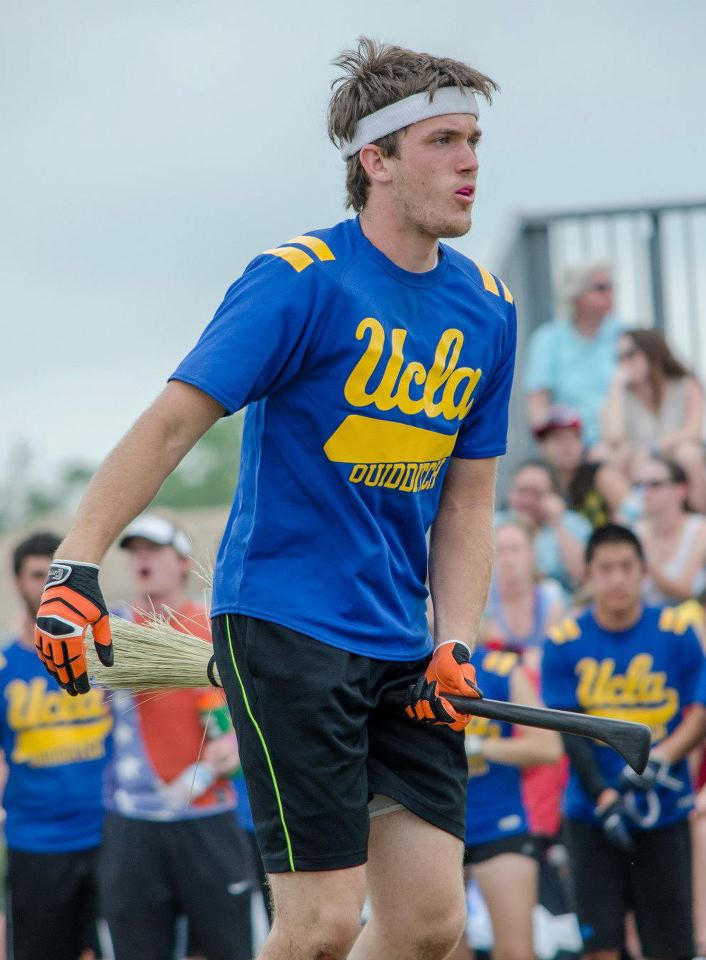
Chris Lock went with an All-American in Adam Richardson with his first pick. Credit: Kat Ignatova/IQA Staff
The major question surrounding the team is experience. Players like Lock, Vampola, Burton, and Raschke, while talented, just finished up their first season of quidditch. This team will look heavily to Richardson, Thomas, Arizona State University’s Kaylee Buchholz, and Santa Barbara founder and beater Evan Bell for leadership. Whether or not that is enough to keep a core of skilled but young players on track remains to be seen.
Silver Team (Captain Kevin Oelze, Silicon Valley Skrewts)
Oelze went for a combination of regional and out-of-region stars, combining top-tier West community team players including beaters Kyrie Timbrook of the Skrewts and Chris Seto of the Lost Boys with University of Kansas wunderkind seeker Keir Rudolph and Texas A&M up-and-comer Sam Keegan Adlis. It will be interesting to see how the Silver team uses Rudolph, who was a Second Team All-American at seeker, but whose incredible athleticism can also be utilized at keeper or chaser. Adlis will provide some solid firepower at chaser while Oelze himself provides the team with one of the better keepers at the tournament, though a fresh injury may endanger his ability to play. Joining Adlis on the chaser line will be Northern Arizona University’s Luke Sanchez and Tufts University’s Hannah DeBaets.
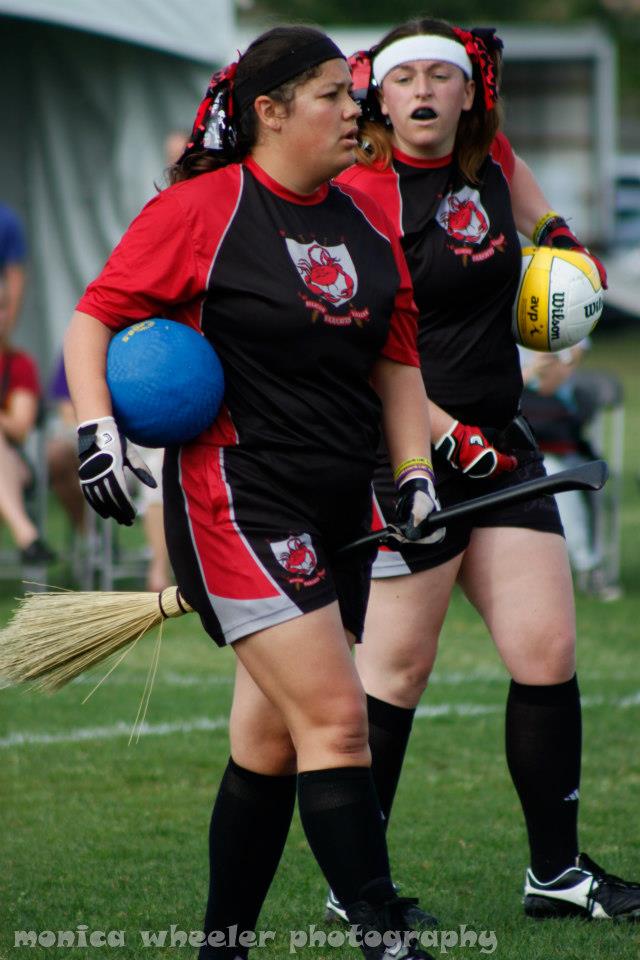
Kyrie Timbrook, along with Chris Seto, anchor one of the tournament’s strongest beater lines. Credit: Monica Wheeler
The questions surrounding this team are twofold. First is depth. Beyond the proven commodities of Oelze, Timbrook, Seto, Rudolph and Adlis and the adequate role-players of Sanchez and DeBaets, the roster is filled with mostly unproven players. Can they step up, or will there be a dramatic drop-off when one of the starters needs to sub? The second concern is health. Oelze is recovering from a hip injury and a freshly-sliced hand, while San Jose State keeper Julian Rosenberg, once the go-to player for the SJSU squad, is back after missing much of the season due to injury. Any further injuries to this squad could be costly, and Oelze and Rosenberg staying healthy throughout the tournament is not as much of a certainty as the team would like.
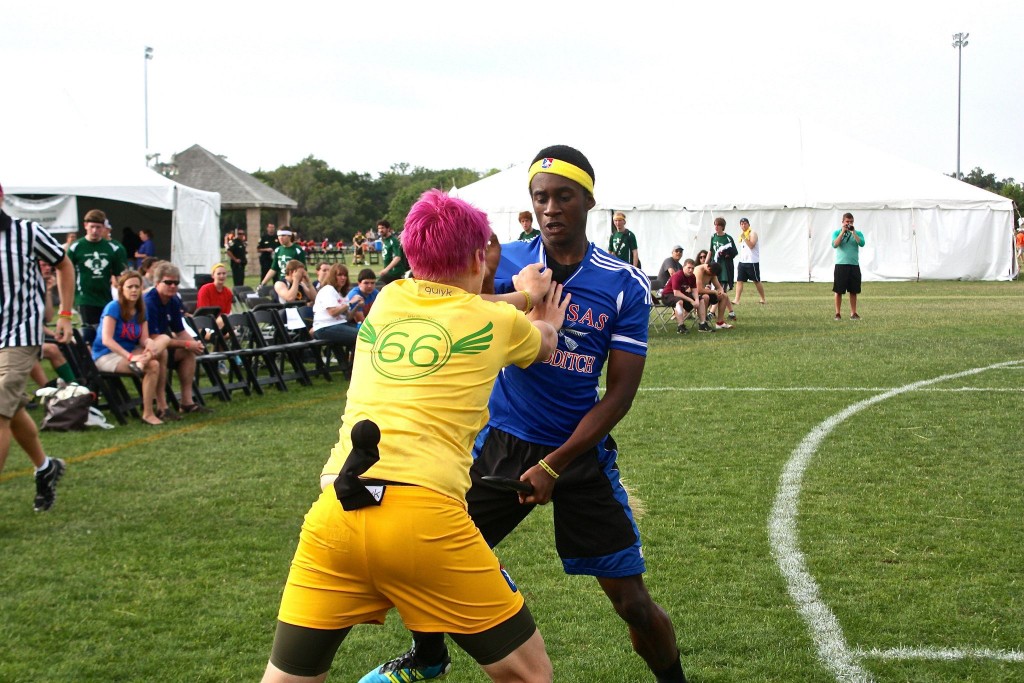
Oelze’s team may lack depth, but they still have All-American Keir Rudolph to bail them out. Credit: Kansas Quidditch
Orange Team (Captain Dyllan Fernandez, University of Southern California)
While not as well-known as some of the other USC players, Fernandez was the co-captain of last year’s FireMercs champions, Rogue Squadron. He started this year’s title-defending squad by getting Arizona State University’s Third Team All-American Alex Makk, who can play just about anywhere you need him. Makk’s combination of speed, strength, arm strength and throwing accuracy prove difficult for any team to stop. UCLA chaser Katelynn Kazane will complement Makk’s playing style nicely, with her aggressive defense, solid passing and catching skills and an ability to find open areas of the pitch. Skrewts’ seeker Igor Gorbatok provides the team with a sure-handed seeker well with a long history of successful grabs. Nothern Arizona’s Justin Regan provides the beater corps with its heart and soul, a role he is used to filling for the Narwhals.
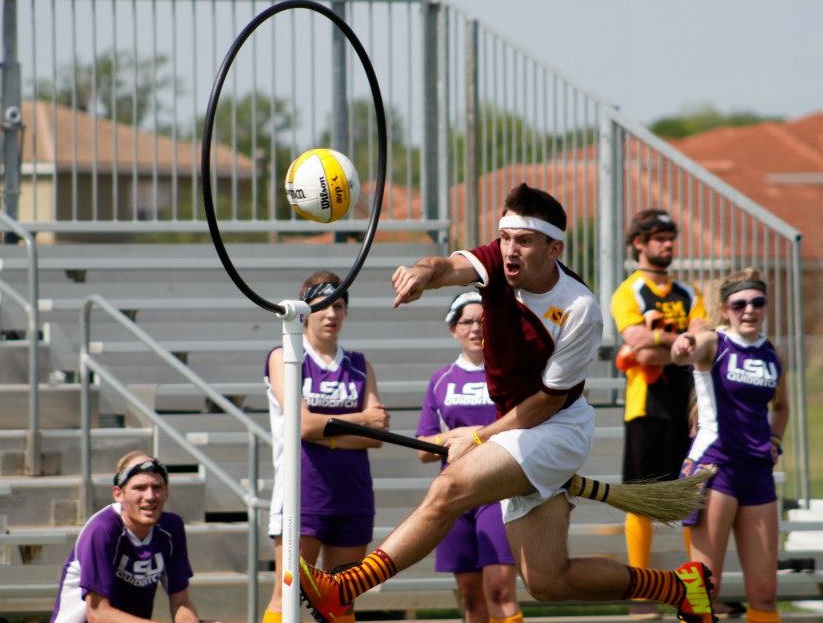
Alex Makk is going to need a near perfect tournament to keep his squad competitive. Credit: Monica Wheeler
A major concern for the orange team is whether or not some players whose careers have been up-and-down will be able to deliver their best games at the tournament. If chaser Greg Leininger of Northern Arizona, keeper Chris Sauro of the Skrewts and beater Ryann Padilla of Arizona State are on, this team will be quite dangerous. But injuries and inconsistency have at times caused their performances to suffer, so it will be interesting to see whether they can step up to the plate in a tournament with many highly-skilled players.
Black Team (Captain Alex Browne, UCLA)
Browne drafted heavily from his own UCLA team, bringing in Third Team All-American keeper and chaser Zach Luce, chaser Brandon Scapa, and beaters Ryan Donahue and Sarah Simko. All are proven commodities, and already have great chemistry with one another. To that UCLA core he added catch-and-score mastermind Sunil Venugopal and UTSA’s small-but-dangerous Shelby Rose at chaser.
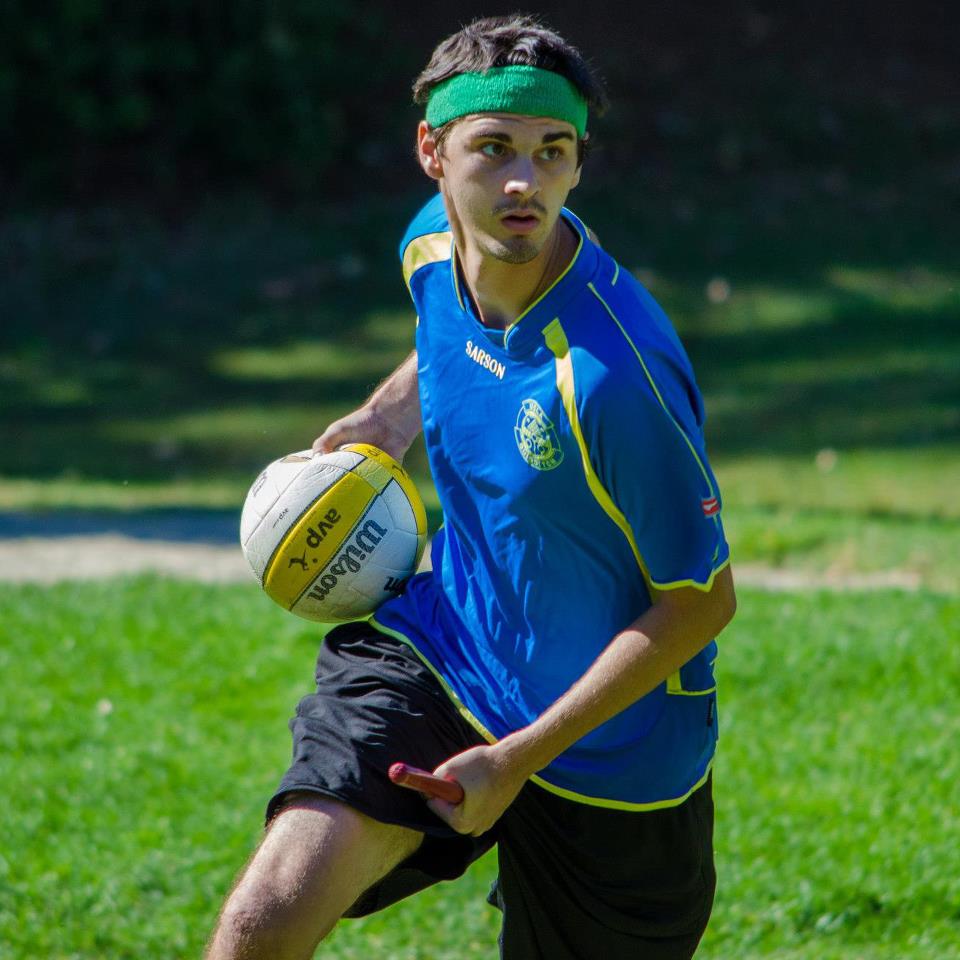
Needing an elite player, Alex Browne turned to the man who shares his position at UCLA, Zach Luce. Credit: Kat Ignatova
Much of the potential for trouble in this team lies in getting non-UCLA players into the fold. Can a largely Bruins’ core successfully integrate players from other teams into their style of play, both in the starting lineup and off the bench? Having so many players familiar with one another can be a blessing, but it can also be a curse, as outside players may have difficulty meshing with the team overall. It was also be interesting to see how the team uses the two top-tier keepers on their roster, Browne and Luce. Using both only as a keeper will be an inefficient use of the team’s strengths, but it will be interesting to see how and when one of them switches roles.
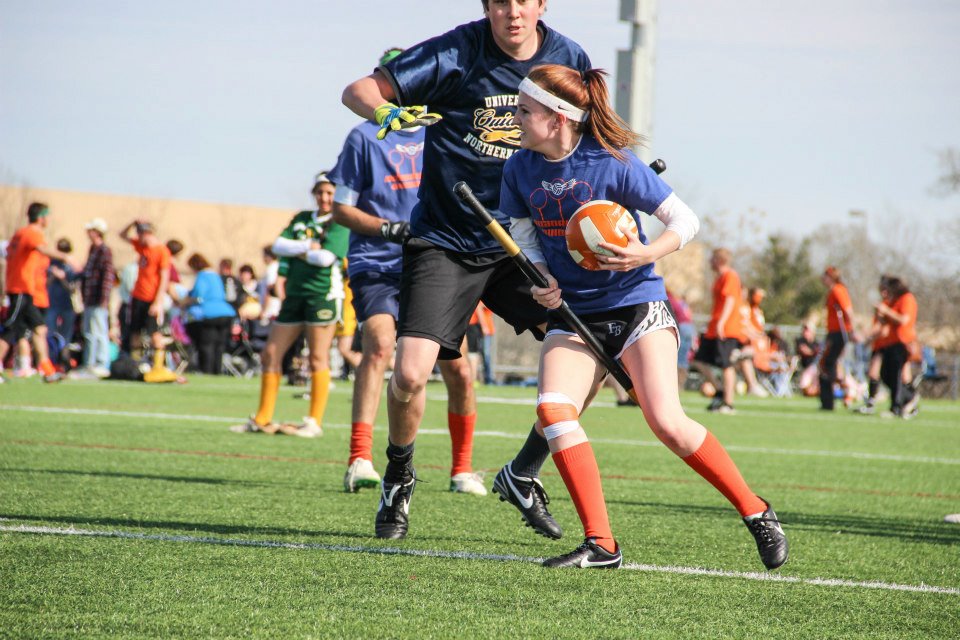
UTSA’s Shelby Rose is one of the non-UCLA players this team will need to work into their strategy. Credit: Lauren Carter
Purple Team (Captain Cooper Davis, team drafted by Josh Taber, both of Northern Arizona University)
This team was assembled to reflect NAU’s playing style: a stingy defense that keeps the game in snitch range and then hands the reigns over to one of the best seekers in the sport. Like he does for NAU, First Team All-American Porter Marsh provides the purple team with that elite seeker. Beaters April Gonzales, also a Narwhal, and Michael Mohlman of the Lost Boys form a stingy beater line that is likely to retain bludger control for the majority of the tournament. Davis, Las Vegas Quid Pro Quo’s Mitch Dumas and Rich Hatch, and the Skrewts’ Jason Winerip provide the physical defenders that NAU’s scheme relies so heavily on. On the offensive side, UCLA chaser Tiffany Chow comes in as a proven goal-scorer.
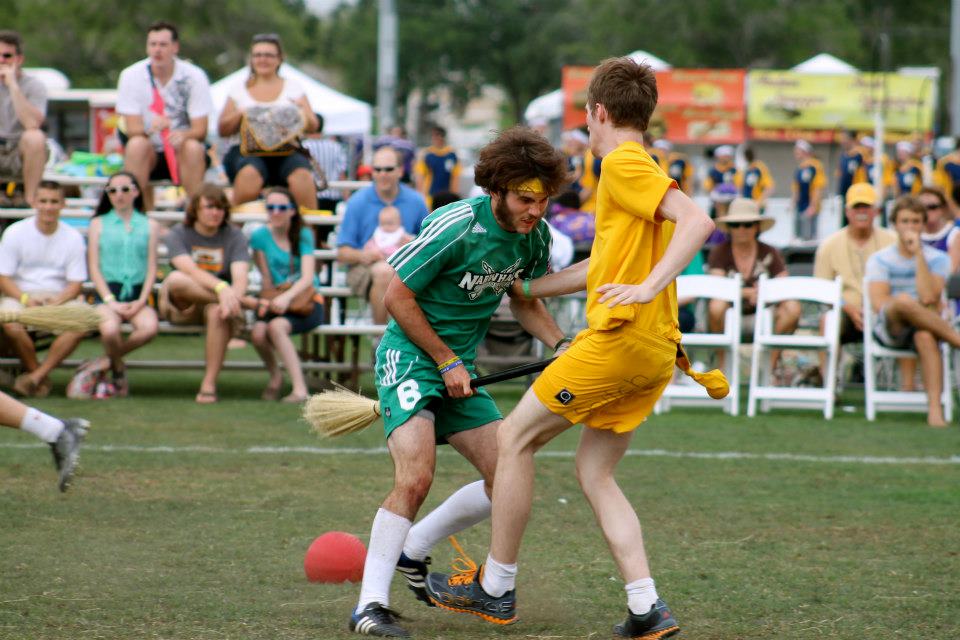
Purple’s success will begin and end with Northern Arizona’s Porter Marsh, who was perfect at World Cup VI. Credit: Robert Valenzuela
The real question with Purple team is whether or not they can put up enough points to keep the game in snitch range against some of the more offensively-adept teams at the tournament. Beyond Chow’s proven scoring ability and Hatch’s and Davis’s occasional tendency to get hot, there isn’t much offense on this team. If they can score enough to keep games in snitch range, things look pretty bright for purple, but whether or not they can put the games into Marsh’s reliable hands remains to be seen.
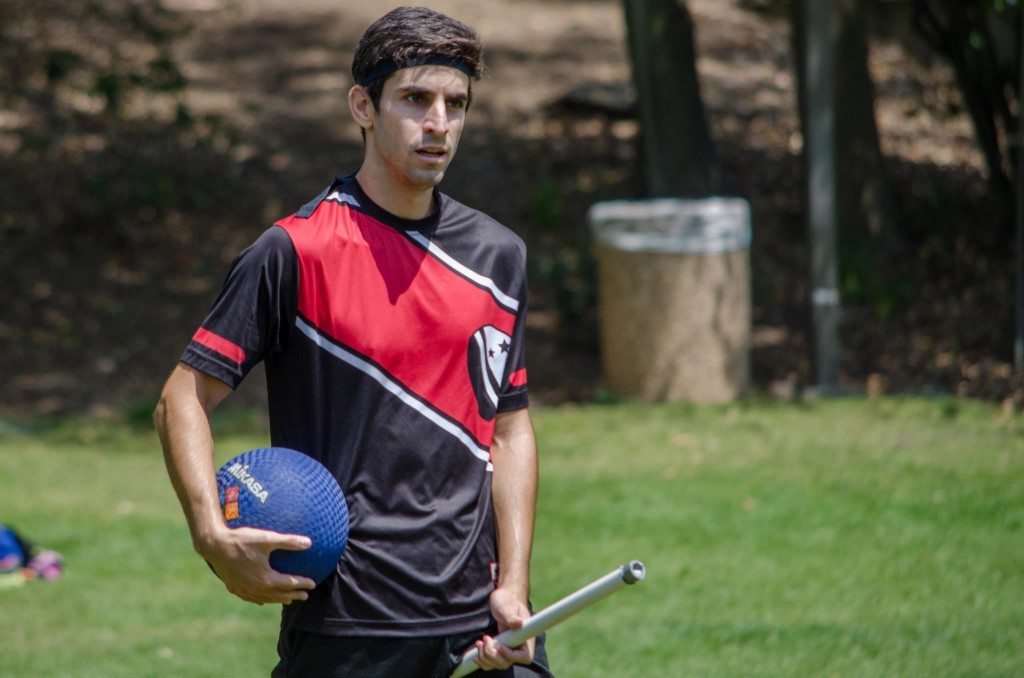
There will be a lot of weight on Michael Mohlmann’s shoulders, as even a few points could be fatal for one of the tournament’s weakest offenses. Credit: Kat Ignatova/IQA Staff
White Team (Captain Jen Tran, University of South Alabama)
Tran managed to snag two members of Team USA 2012 and an All-American, drafting Texas A&M chaser Becca DuPont, Silver Phoenixes utility player Mollie Lensing, and University of Miami beater Matt Ziff, who can also seek. Having played and dominated opposing teams with one another, the chemistry of that core should be pretty good. To run the offense from the keeper spot, Tran picked up Stanford’s David Saltzman in a trade, a smart, agile keeper who is usually involved in some way in every single Stanford goal. Austin Quidditch’s Paxton Casey provides this team with some much-needed size and physicality. This team also picked up some solid hustle players in chasers Anthony Hawkins of the Hollywood Harpies and Forrest Stone of the Skrewts.
There are two major concerns for the White team. The first is health. Lensing and Ziff both injuries that could limit their abilities at this tournament, and it’s unclear whether either will be anywhere near 100 percent by tomorrow. The second concern is size and physicality. While players such as Lensing, DuPont, and Saltzman are tenacious, they are also undersized compared to a lot of the players they will be matched up against. Casey is the only true “big guy” on this team, and opposing teams may use physical lineups to exploit that overall lack of size.
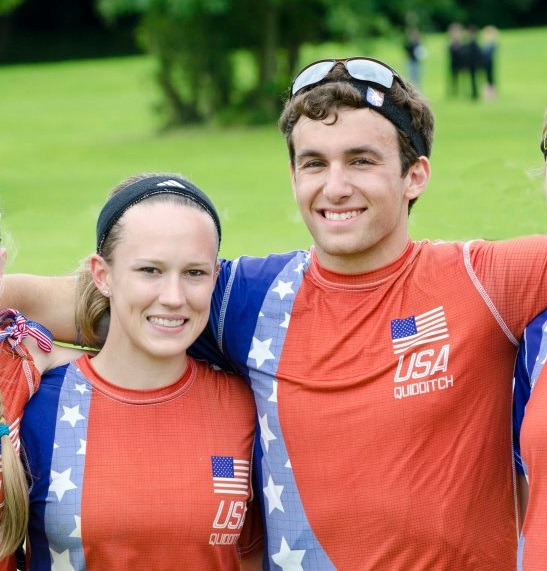
Mollie Lensing and Matthew Ziff teamed up last season as beaters for Team USA, but injuries may limit them this weekend. Credit: Vanessa Goh
Red Team (Captain Tony Rodriguez, Lost Boys)
Having the luxury of already starting with one of the best players at the tournament, Rodriguez put together a very complete team in the draft. By selecting Vassar’s Peter Lee in the first round and getting the steal of the draft by nabbing UCLA’s Kara Levis in the ninth round, Rodriguez assembled an absolutely dominant beating corps that should allow the team’s quaffle players to shine. Chasers Michael Binger of the Bruins and Amanda “Turtles” Nagy of the Lost Boys and utility players Logan Trudell from Sierra College and the Lost Boy’s Andrew Waldschmitt (Lost Boys) will be perfect compliments to Rodriguez in the quaffle game. The team also got some solid depth in QPQ Las Vegas chaser Ericka Phanthip, Arizona State beater Duston Mazella, and San Jose State keeper Tristan West.
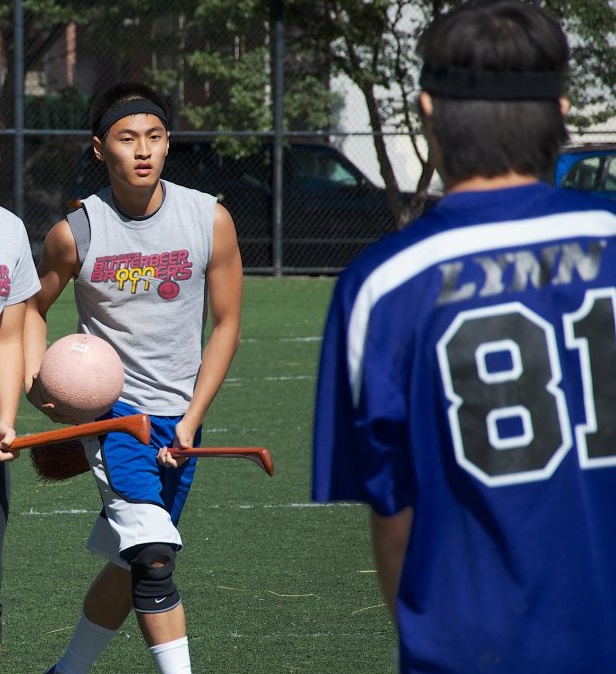
Peter Lee is quietly one of the sport’s best beaters, but will have a chance to make some noise this weekend. Credit: Michael E. Mason/IQA Staff
The major question for red team is the seeking game. While Waldschmitt has experience and is a decent option at the position, the red team lacks a game-changing seeker, and may struggle in that department against some of the elite seekers at the tournament. Rodriguez does not have the likes of best friend Steve DiCarlo on his squad this time around.
Green Team (Captain Tad Walters, Loyola of New Orleans)
Walters went with a very physical team full of flexible utility players. Second Team All-American chaser Vanessa Goh of UCLA may be smaller than some of the opponents who will get assigned to her, but her abilities to defend and dish out and take hits are well-documented. Considering that she will be surrounded by large, physical utility players such as Texas A&M’s Eric Willroth, Sierra College’s Nebraska Huggins, and Arizona State’s Ryan Cancino, opponents are going to be in for a world of hurt when going against this team. Walters didn’t focus solely on quaffle-player defense though, snagging one of the best and most-underrated beaters at the tournament in Silicon Valley’s Willis Miles IV and then adding some depth with Chandler Smith of Oklahoma Baptist University.
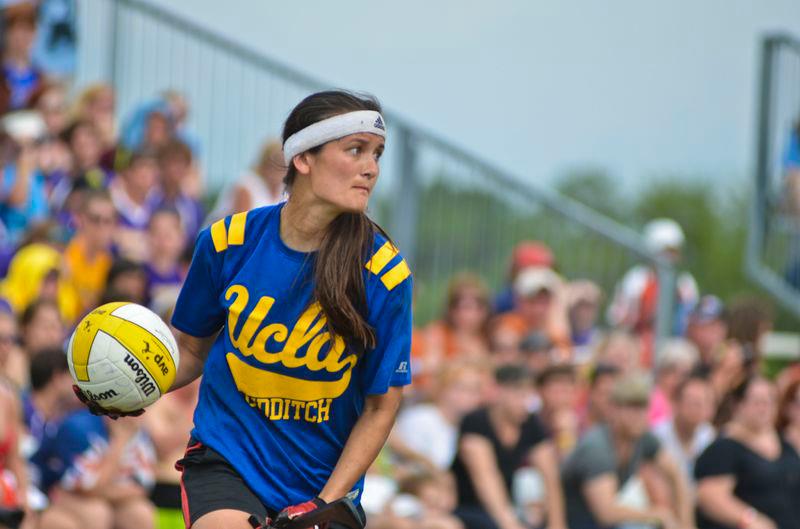
Green Team will have the most complete chaser line out there almost anytime Vanessa Goh is on the pitch. Credit: UCLA Quidditch
But does this team rely too much on size, leaving their overall lack of top-end speed to be easily exploited? You can’t hit what you can’t catch, and if opposing teams are able to stay away from Miles’ bludger, they may be able to use speed to avoid confrontations with the chasers and keepers. That lack of elite speed could also be problematic on offense as well, as the grind-it-up-the-pitch style that their roster is built for can be stopped by talented, aggressive beaters. Miles is going to be called on to do a lot on both ends of the pitch in order to prevent teams from exploiting these issues, and it remains to be seen whether he can pull it off.
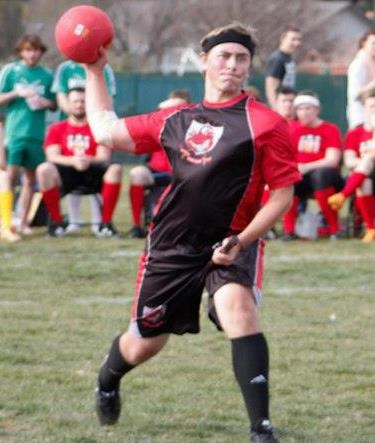
To give his team’s chaser lines a chance to shine, Willis Miles IV will need to have a strong tournament. Credit: Monica Wheeler
Blue Team (Captains Dan Hanson and Steve DiCarlo, Lost Boys)
Hanson and DiCarlo will each miss one day of the tournament, but that won’t matter too much with all nine team going through to bracket play and the absolutely stacked roster the pair put together. A chaser line of UCLA’s Jeff Lin and Missy Sponagle, Silicon Valley’s Aviva Maine and Riverside’s Tye Rush bring a terrific combination of speed and physicality, and will provide arguably the most athletic chaser corps at the tournament. Bruins keeper Jake Tieman provides Blue with a punishing physical presence in front of the hoops, and should combine with his chasers to form an absolute juggernaut of an offense. Mitch Cavender and the Lost Boys’ Misty Gray form a solid beating duo with excellent strategic awareness. For that day of the tournament where DiCarlo won’t be there to terrorize snitches at the seeker position, they made sure to pick up solid options in Lin and Plunger Parvulescu (McGill), both of whom have proven more than capable. The depth in this team borders on ridiculous.
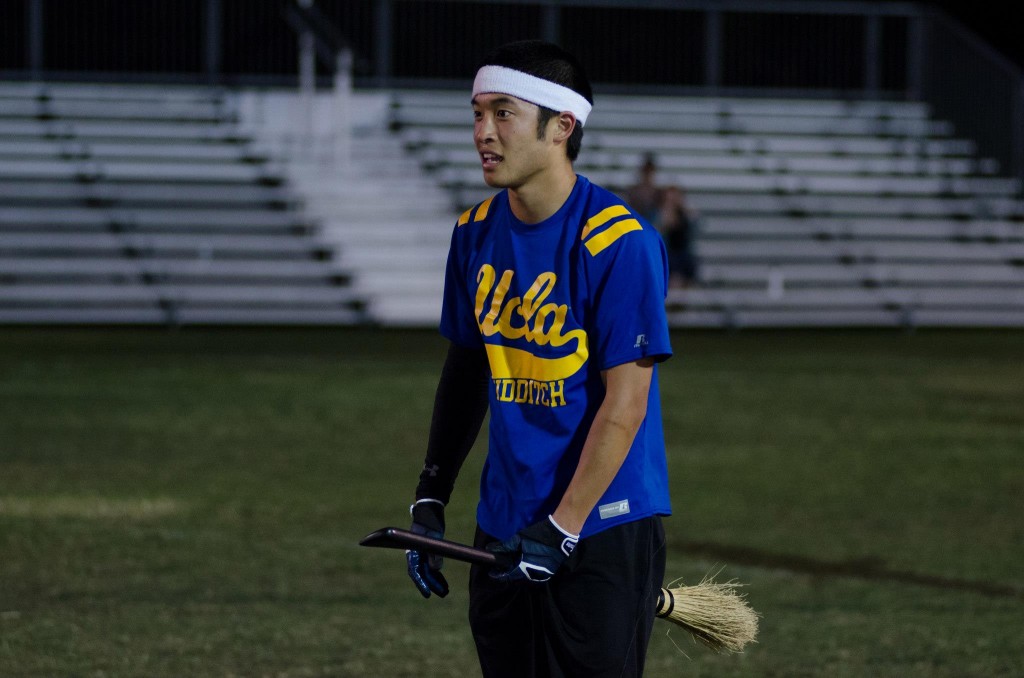
Jeffrey Lin will be vital to his team’s day one success, likely playing chaser and subbing it at seeker in Steve DiCarlo’s absence. Credit: Kat Ignatova/IQA Staff
The major question with blue is how their beaters will hold up against elite opposition. While both Gray and Cavender are solid and should mesh well, they aren’t quite on the same level as some of the other pairings, most notably Timbrook and Seto or Lee and Levis. Whether or not they can hold up well enough against opposing beater pairings to allow their quaffle players to do their thing will likely determine whether or not they progress deep into the tournament and possibly bring home the trophy.
Pre-Tournament Rankings
9. White
8. Orange
7. Pink
6. Purple
5. Green
4. Silver
3. Black
2. Red
1. Blue

